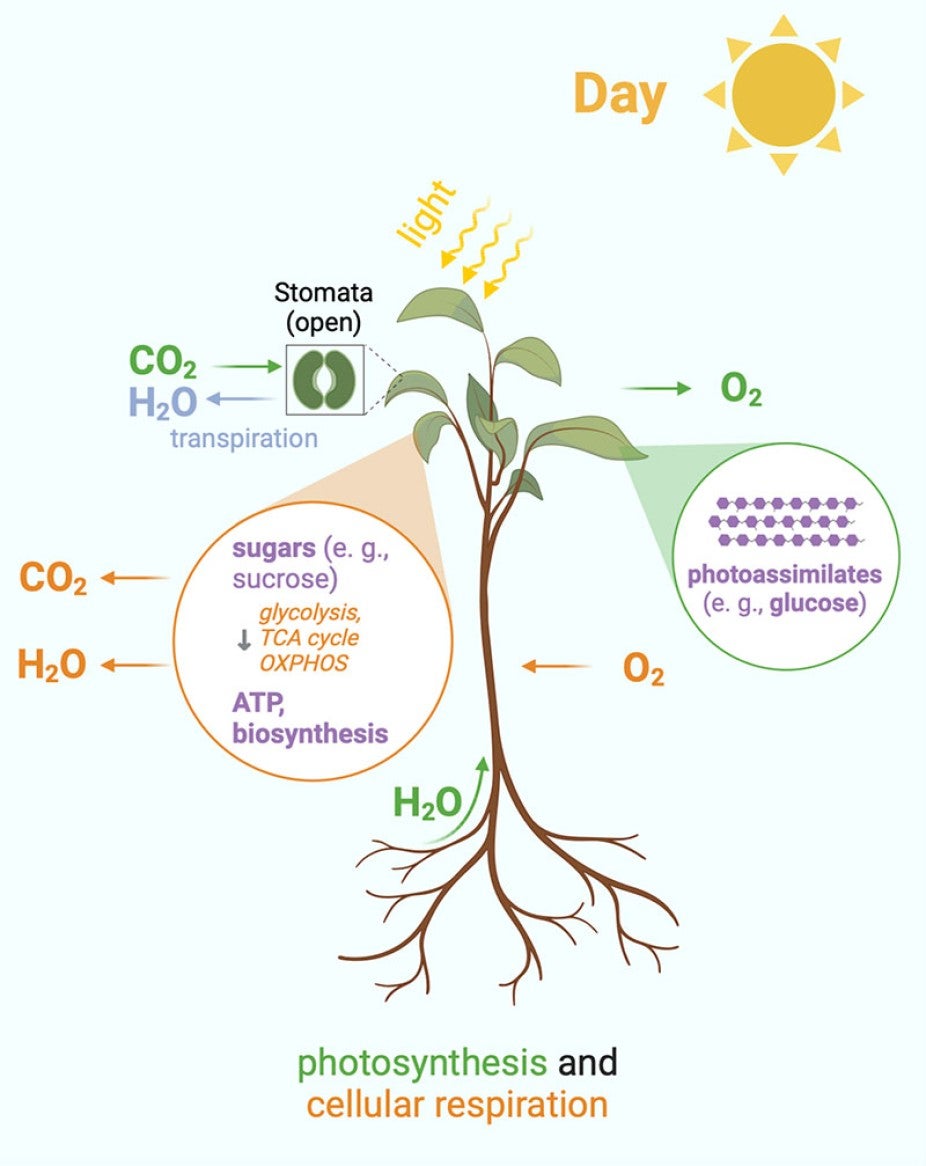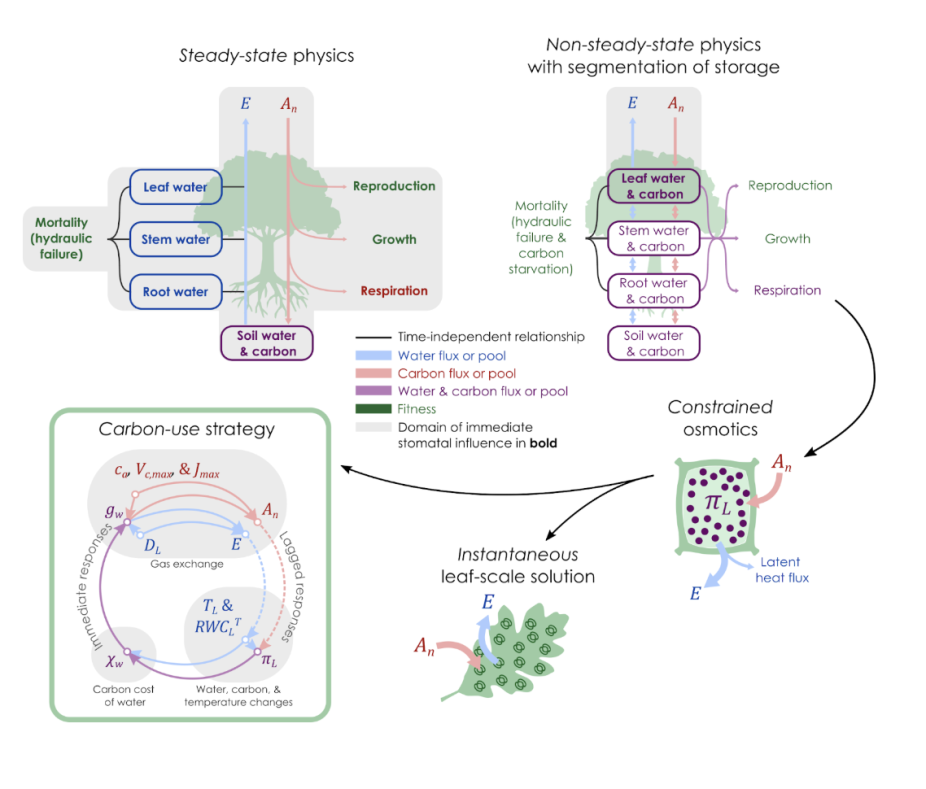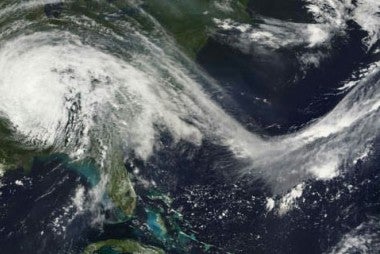NOAA C&GC Fellow Aaron Potkay explores plant behavior amid climate variability
The field of hydraulics evokes images of water flowing through pipes, like the intricately designed systems of pipes that pump water to our cities, but it is a process that also applies to plants.

Aaron Potkay, NOAA Climate and Global Change Postdoctoral (C&GC) Fellow
It’s the latter application that interests Aaron Potkay, a NOAA Climate and Global Change Postdoctoral (C&GC) Fellow at UCAR | Cooperative Programs for the Advancement of Earth System Science (CPAESS). Fascinated by water, Potkay studied engineering and hydrology as an undergraduate and master’s student, and later, earth and planetary sciences as a Ph.D. candidate at Rutgers University. As he learned more, he developed an interest in understanding systems at a much smaller scale, down to individual plants and their stomata, the pores on their leaves.
Plant hydraulics describes the process through which water is absorbed by plant root systems and flows to the leaves where it is released through stomata and evaporates. Water is exchanged for carbon dioxide (CO2), a gas that is critical for photosynthesis because it is converted into carbohydrates and oxygen to support plant life and growth.
Potkay hoped that learning more about this process through improved models could lead to a better understanding of how plants can weather the climate fluctuations on Earth.
“Plants need water to survive and photosynthesize but from a climate perspective, we care about photosynthesis because it’s a large part of the terrestrial carbon cycle,” says Potkay. “Water availability controls whether plants and trees will survive or die under future drier climates.”

During the day, plants convert light energy to chemical energy via photosynthesis. This requires CO2 which is taken up via stomata (small openings in the leaves), and water, which is taken up by the roots.
Kindofmagic4u. Used with permission under CC BY 4.0.
The process of capturing and storing CO2 for long periods of time makes trees crucial to reducing the impact of carbon pollution in the atmosphere. In fact, according to the U.S. Department of Agriculture (USDA) Forest Service, forestlands in the U.S. sequester about 800 million metric tons of CO2 (one ton alone is equivalent to 400 bricks) and other greenhouse gases annually (Source) or about 25 percent of the anthropogenic carbon emissions.
But, notes Potkay, forests are particularly vulnerable to changing climate conditions because of their dependence on water: less water coupled with more drought and a warming climate are killing trees at a time when increasing the carbon uptake of plants is one mitigation strategy.
This aspect of plant hydraulics interested Potkay and presented an avenue for investigating a mathematical problem, one that zeroed in on stomata that close and open as a plant releases water or takes up CO2.
“Stomata let CO2 in to perform photosynthesis and water out for transpiration which ultimately adds moisture to the atmosphere by removing it from the ground,” says Potkay.
Potkay’s research leans toward the theoretical and involves developing mathematical models to simulate not only how stomata will behave or respond but how they should behave or respond in order to predict how climate stresses like reduced water or the onset of prolonged drought will affect tree growth that is dependent on water, and in some scenarios, their mortality.
“The classic definition of what plants should do under certain conditions has not been working because there have been increasingly longer periods with no rain, so the soil is drier and the environment is changing,” says Potkay. “In general, we are seeing higher temperatures, drier air, higher CO2 concentrations, all of which affect plants.”
“Though past stomata models have worked under past climates, my models and others’ models are trying to predict stomatal behavior that natural selection will favor by formulating these goals of evolution in mathematical expressions,” he said.

The top left ("Steady-state") shows that most past models ignore the effects of plants' internal storage of water and carbohydrates on reproduction and growth (i.e., evolutionary fitness), which causes past models to overextend the effect that stomata have on plants. [That is, if there is no storage, then the carbohydrates used for reproduction and growth are immediately sourced by the carbon assimilated photosynthetically by stomata]. In reality, plants have storage of water and carbohydrates (top right; "non-steady-state"), which decouples stomatal behavior from reproduction and growth over the short periods over which stomata open and close.
Credit: Aaron Potkay
Potkay’s two most recent papers were published in Global Change Biology (2025) and Plant, Cell and Environment (2024) and elaborate on his model and theories.
“The NOAA C&GC Fellowship has allowed me to develop new theory that may ultimately have new applications. It has also helped me to meet many other people interested in the same problems,” says Potkay.









